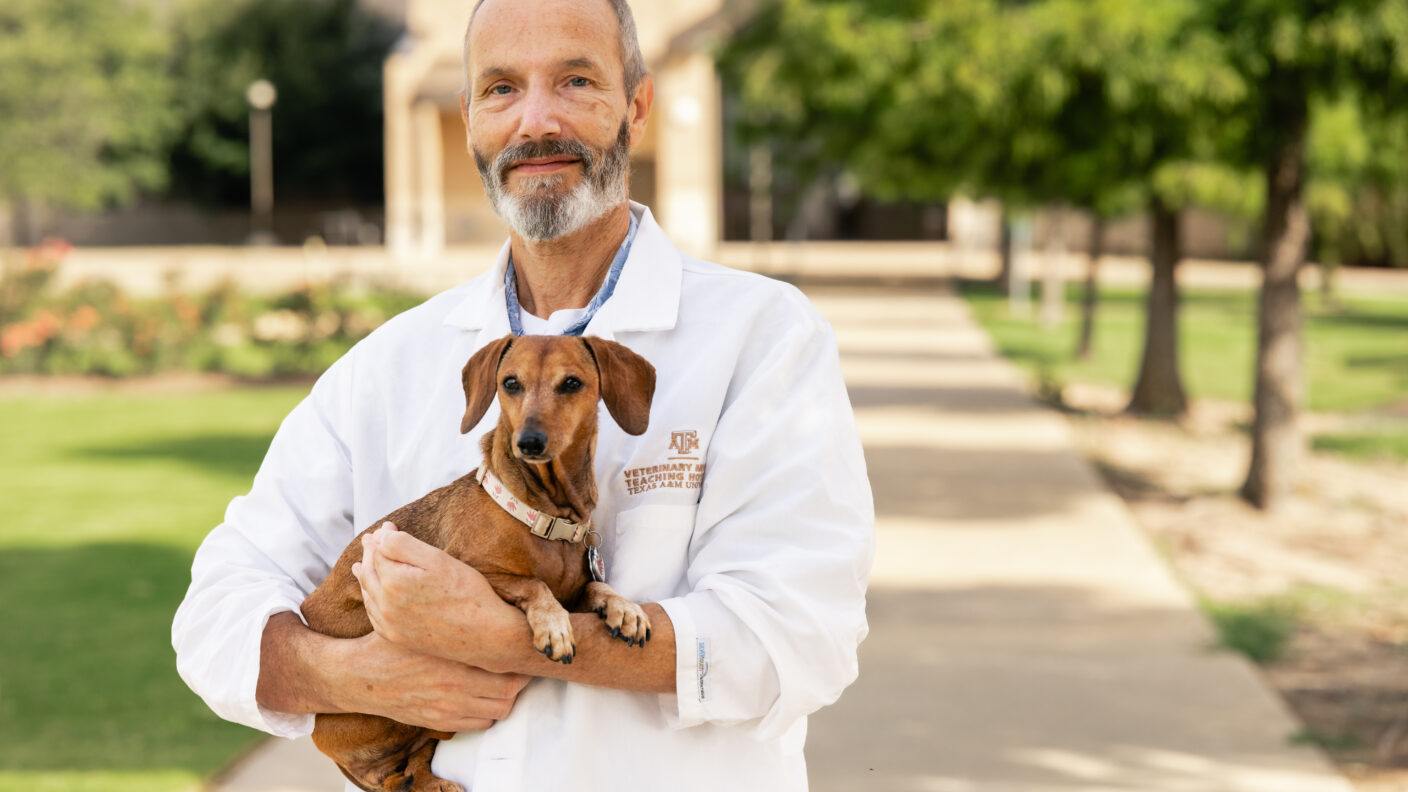Success Of Texas A&M-Led Clinical Trial Offers Hope For Dogs With Herniated Discs
A new non-invasive treatment — developed by a Texas A&M faculty member and offered only at Texas A&M — appears to be as effective as surgery in helping small dogs walk again after paralysis from a herniated disc.

Dr. Nick Jeffery, a professor of neurology in the Texas A&M College of Veterinary Medicine and Biomedical Sciences Department of Small Animal Clinical Sciences holds Primrose.
Small breed dogs — including dachshunds and French bulldogs — have a high risk of developing a herniated disc in their middle back, which can lead to partial or complete paralysis in the hindlegs. Until recently, the only treatment for dogs that do not respond to rest and therapy has been a costly decompressive surgery that involves removing the herniated disc.
Now, thanks to a new treatment developed by Texas A&M University professor Dr. Nick Jeffery, more dog owners will be able to afford treatment for herniated discs, which affects hundreds of thousands of dogs in the United States alone.
The new treatment comprises injections of an enzyme administered into the dog’s back. In previous work, Jeffery had used the same product to remove scar tissue in the spinal cord of dogs that had suffered very severe injuries. Through this work, he realized that the enzyme also can dissolve the core component of intervertebral discs, which is how the injections are used to treat herniated discs.
In January 2023, a dachshund named Oscar was the first participant in a clinical trial testing the enzyme for this purpose.
The injection treatment is now being offered at the Texas A&M Small Animal Teaching Hospital as an alternative to surgery based on the success of a clinical trial with 54 dogs conducted by Texas A&M and the University of Cambridge.
“While we are continuing to collect more cases, there is enough evidence that the treatment works to offer owners a choice between injections and surgery,” said Jeffery, a professor of neurology in the College of Veterinary Medicine and Biomedical Sciences’ (VMBS) Department of Small Animal Clinical Sciences.
For dogs that have not lost pain perception in their hind legs, the new treatment has shown to be as effective as surgery, according to published results of the trial. Patients also regain the ability to walk independently in about the same time.
“Disc decompressive surgery is about six times more expensive than enzyme injections; we hope this new procedure will make herniated disc treatment available to more dogs by lowering the financial barrier for their owners,” Jeffery said. “Also, the recovery time for injections is much shorter; following surgery, dogs typically stay in hospital for three to four days and then require further rest to allow the muscle at the operation site to heal. In contrast, most dogs can be sent home the same day after receiving injections.”
“I am so thankful for the dedicated veterinarians and veterinary teams at the VMTH who are providing innovative and life-saving procedures,” said Dr. Stacy Eckman, VMBS associate dean for hospital operations.
To be eligible for injections, dogs must be between 2 and 10 years old and weigh less than 33 pounds. Owners must also initiate treatment within three days of symptom onset.
